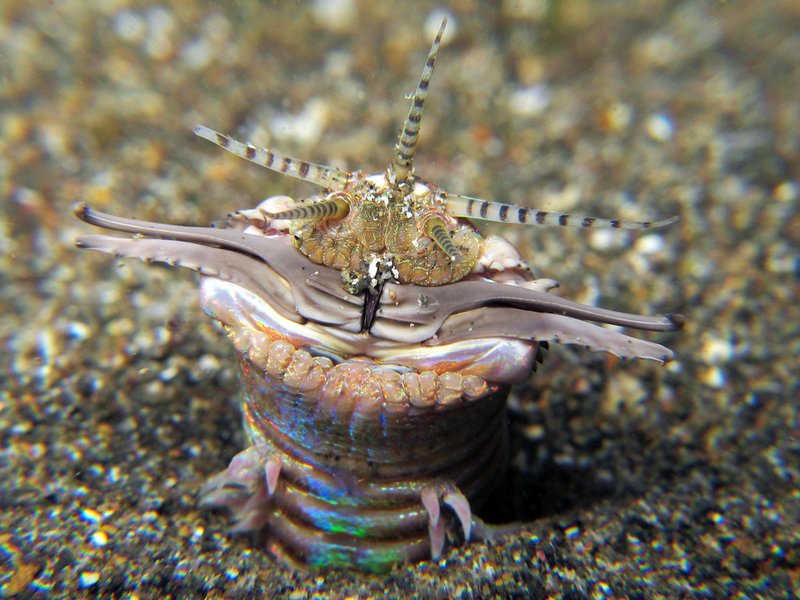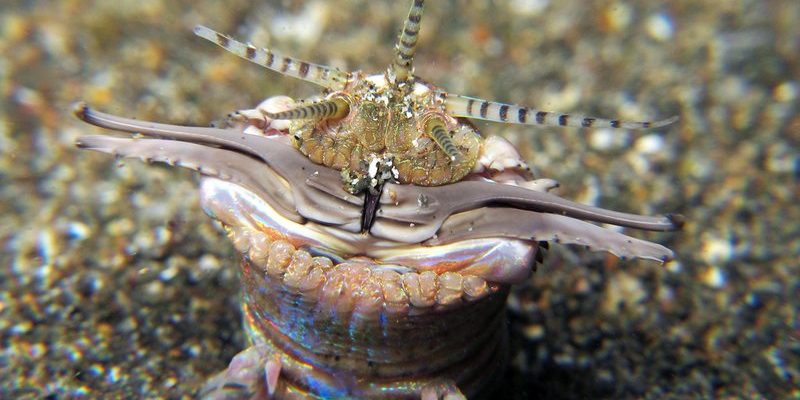
Think of Bobbit worms like the night owls of the ocean floor. They’re mostly hidden in their sandy burrows, waiting for the perfect moment to strike. Much like a cat pouncing on its prey, they’re not just lurking all the time. This brings us to a common question: after a meal, do they turn into energetic little wigglers, or do they chill out and digest their food? Let’s explore what makes these intriguing creatures tick.
Understanding Bobbit Worm Behavior
Bobbit worms, also known as *Eunice aphroditois*, are fascinating marine creatures. Found in tropical oceans, they can reach impressive lengths of up to 10 feet. If you were to see one, you might think it’s just a fancy piece of underwater flora. Here’s the thing—Bobbit worms are not your average sea critters. They’re highly active hunters, using their long bodies and sharp jaws to catch fish and other small marine animals.
These worms are typically nocturnal, meaning they’re more active during the night. During the day, they tend to retreat into their burrows. You could say they’re like introverts at a party—only coming out when they feel comfortable and safe. Their hunting strategy involves lying in wait, camouflaged against the ocean floor, until a meal gets too close for comfort.
What Happens After Feeding?
You might be asking, “So, what do they do right after they’ve eaten?” After a feeding, Bobbit worms can experience a burst of energy. They often engage in a behavior called “post-feeding activity.” This activity can include more movement within their burrows, adjusting their position, or cleaning their environment. Think of it as a mini workout after a big meal; they’re just getting some wiggles in!
However, the level of activity can vary depending on several factors, like the size of the meal they just consumed. A large meal may lead to a longer digestion period, causing them to be less active. On the other hand, a smaller meal could result in them becoming a bit more animated.
Factors Influencing Activity Levels
Several factors can affect how active Bobbit worms are after they eat. Here’s a breakdown:
- Size of the Meal: A smaller meal usually means they can digest it faster and return to their usual activities.
- Time of Day: Since Bobbit worms are nocturnal, they’re generally more active at night. Even after a meal, their activity peaks during this time.
- Environmental Conditions: Factors like water temperature and currents can also play a role. Warmer temperatures can stimulate more movement.
All of these elements combine to create a unique set of behaviors that can change based on individual circumstances. It’s a bit like trying to predict how a friend will react after a big meal—they might be lively or take a nap!
Bobbit Worms and Their Feeding Techniques
Now, you might be curious about how these worms actually go about hunting their food. Bobbit worms are ambush predators. They stay hidden in their burrows and wait for unsuspecting fish or crustaceans to swim too close. When they sense movement, they spring into action, extending their long bodies to latch onto their prey with powerful jaws.
After a successful hunt, they pull their catch back into their burrow to enjoy their meal. Let me explain why this is important: the energy they expend during this hunting process can affect how they behave afterward. If they’ve put in a lot of effort, you might find them resting more than if they made an easy catch.
Digesting the Meal: Activity vs. Rest
After a feeding, Bobbit worms enter a digestion phase. This is where things get interesting. Depending on the meal size and type, the digestion process can take some time. During this phase, many worms will be less active, conserving energy to focus on digestion.
Much like humans might feel sluggish after a heavy meal, Bobbit worms may also slow down. They can be found nestled deeper in their burrows, sometimes staying out of sight for a while. This downtime is crucial for their health and well-being, as it allows for proper digestion and nutrient absorption.
Bobbit Worms in Captivity
If you’re ever lucky enough to observe Bobbit worms in an aquarium setting, you might notice how different their behavior is compared to their wild counterparts. In captivity, their feeding schedule can be regulated, which might change their activity patterns too.
For example, if you feed them regularly, you likely won’t see them showing a burst of energy right after each feeding. Instead, you’ll notice a more consistent activity level, as they get used to their feeding routine. It’s a bit like how you might feel on a regular meal schedule—your body adapts and behaves differently based on your feeding times.
Why Understanding Their Behavior Matters
Knowing about Bobbit worms’ activity levels after feeding can offer insights into their ecological role. They’re not just fascinating creatures; they play a significant part in their ecosystems. By understanding their behavior, we can better appreciate their contributions to marine life.
Plus, if you’re an aquarist, knowing when these worms are more active can help you create a more suitable environment for them. By mimicking their natural feeding and resting patterns, you can ensure they thrive in your care.
In summary, Bobbit worms do show changes in activity after a meal, but those changes depend on various factors, including meal size, time of day, and environmental conditions. Their unique behaviors make them captivating subjects for marine enthusiasts.
So the next time you’re intrigued by the underwater world, remember the Bobbit worm. Whether they’re lounging in their burrows or darting out for a bite, these fascinating creatures have a lot to teach us about life beneath the waves. Understanding their needs and habits helps us appreciate the complexity of marine ecosystems—and that’s something worth diving into!

